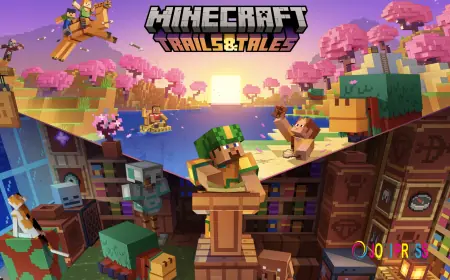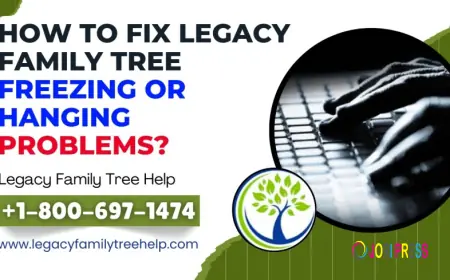Community 3.0 – The End of the Engagement Trap
Community 3.0 – The End of the Engagement Trap
The Future of Social Media: Why Belonging Will Replace Vanity Metrics
For more than a decade, social media has been defined by numbers—likes, followers, shares, and impressions. These vanity metrics promised influence and reach, but they rarely told the full story of connection. Today, cracks are showing in that model. Algorithms reward shallow engagement, creators burn out chasing visibility, and businesses struggle to build genuine trust with their audiences. The real question is not how to get more likes but how to build communities that last.
This is the central argument of Community 3.0 – The End of the Engagement Trap, a new book by Stefan Komlos. The book lays out a bold vision for the Future of Social Media: a shift from chasing attention to fostering belonging, co-creation, and purpose-driven growth. For business leaders, marketers, game developers, and creators, understanding this shift is essential to future-proofing their communities.
The Engagement Trap: A Model That’s Breaking Down
Social platforms were built to maximize engagement. The more users interacted, the more data platforms collected, and the more ads they could sell. But for brands and creators, the focus on engagement metrics created what Komlos calls the “engagement trap.”
A post might rack up thousands of likes, but what does that mean for loyalty? Followers might double after a viral video, but how many of those people will still be there six months later? The trap is that these numbers feel good but don’t build the foundations of lasting relationships.
Increasingly, audiences see through shallow engagement strategies. They want to be more than consumers—they want to be participants, collaborators, and co-creators. This desire points to where social media is heading.
Enter Community 3.0
Komlos describes three ages of community:
-
Community 1.0: The Broadcast Era
Audiences gathered around shared interests but had little influence. Brands and creators spoke; audiences listened. -
Community 2.0: The Engagement Era
Social platforms introduced likes, comments, and followers, offering interaction but often trapping both brands and users in a numbers game. -
Community 3.0: The Age of Belonging
The next evolution moves beyond vanity metrics. In this model, communities thrive when people feel a sense of belonging and have meaningful ways to participate. Engagement is no longer about tapping a heart icon but about co-creating experiences, solving problems together, and building shared value.
This vision reflects how culture, technology, and user expectations are converging. People want to join communities where their contributions matter, where trust grows naturally, and where participation feels rewarding.
Why Belonging Outlasts Engagement
The future of social media rests on a simple truth: belonging is stronger than engagement. Engagement can be fleeting, but belonging creates stickiness. When people feel part of something larger than themselves, they show up, invest their energy, and bring others along.
Consider online games. The most successful titles are not just entertainment products; they are living communities. Players form guilds, contribute fan art, and build strategies together. Their participation strengthens the ecosystem in ways likes and followers never could.
Or take purpose-driven brands. Companies that invite customers to co-create solutions—whether through feedback loops, sustainability initiatives, or open product development—generate far more loyalty than those who rely on polished ad campaigns alone.
This shift is not just cultural; it’s also economic. Retention, advocacy, and trust drive long-term growth, while chasing attention often leads to diminishing returns.
Frameworks for the Next Era
In Community 3.0, Komlos introduces practical frameworks to help leaders transition from engagement traps to thriving communities. Three stand out:
-
The Participation Flywheel
Growth no longer comes from one-way marketing pushes but from creating systems where participation fuels itself. When members contribute, they create value that attracts new members, who then contribute in turn. -
The Trust Ladder
Trust is not binary—it develops step by step. Communities must design experiences that help people climb from curiosity to commitment, from passive observer to active co-creator. -
The Three Ages of Community
By understanding where your community is today, you can plan for where it needs to go. Leaders must recognize when they’re stuck in Community 2.0 habits and chart a path toward the belonging-focused model of Community 3.0.
These frameworks are more than theory. They’re roadmaps drawn from Komlos’s years of experience working with international game studios, indie creators, and global communities.
Implications for Leaders, Marketers, and Creators
The shift toward Community 3.0 affects nearly every industry. For business leaders, it means rethinking customer relationships as long-term partnerships, not transactions. For marketers, it means moving away from campaigns designed for quick wins and toward programs that invite ongoing collaboration. For game developers and creators, it means designing ecosystems where fans can contribute meaningfully instead of passively consuming content.
One clear example is the rise of creator-led platforms that emphasize shared ownership. Communities built around shared revenue models, open governance, or decentralized decision-making are already proving more resilient than those relying solely on algorithms for distribution.
The lesson is straightforward: if your community depends on algorithms, it’s fragile. If your community depends on belonging, it’s durable.
The Future of Social Media is Co-Creation
Looking ahead, the future of social media will be less about broadcasting and more about building. Communities will be measured not by how many people are watching but by how many are contributing. The most successful leaders will be those who design spaces where members feel a genuine sense of ownership and connection.
Komlos’s Community 3.0 – The End of the Engagement Trap offers a timely guide for this transition. It challenges the outdated idea that engagement equals success and provides practical tools for creating communities built on trust, purpose, and participation.
As the platforms of the past struggle with declining trust and fractured attention, the opportunity lies in building something deeper. The question for every leader, creator, and marketer is not how to grow engagement but how to build belonging. Those who answer that question will shape the next chapter in the future of social media.
What's Your Reaction?
 Like
0
Like
0
 Dislike
0
Dislike
0
 Love
0
Love
0
 Funny
0
Funny
0
 Angry
0
Angry
0
 Sad
0
Sad
0
 Wow
0
Wow
0
















































